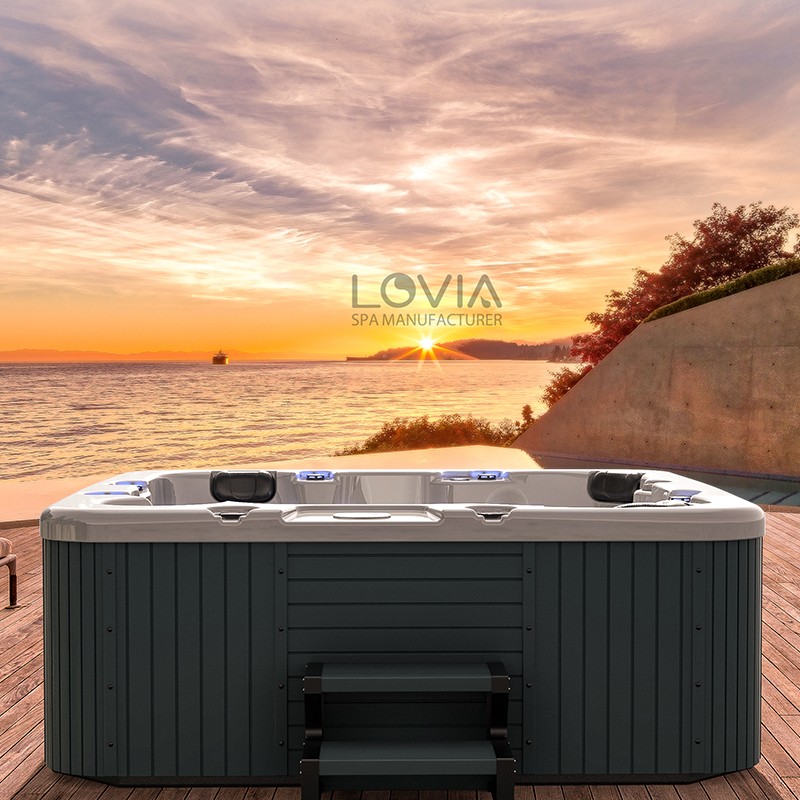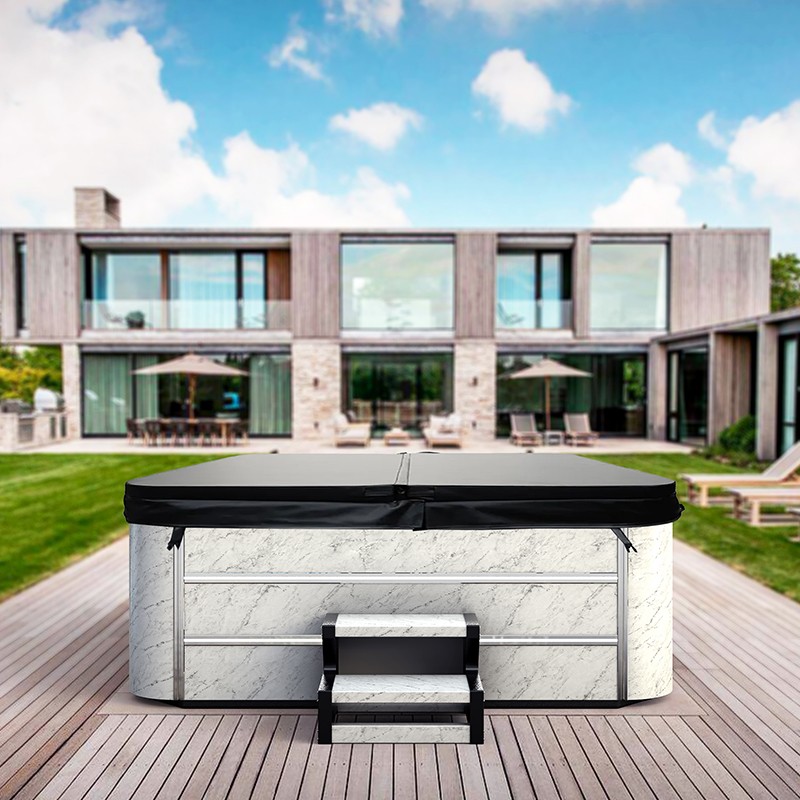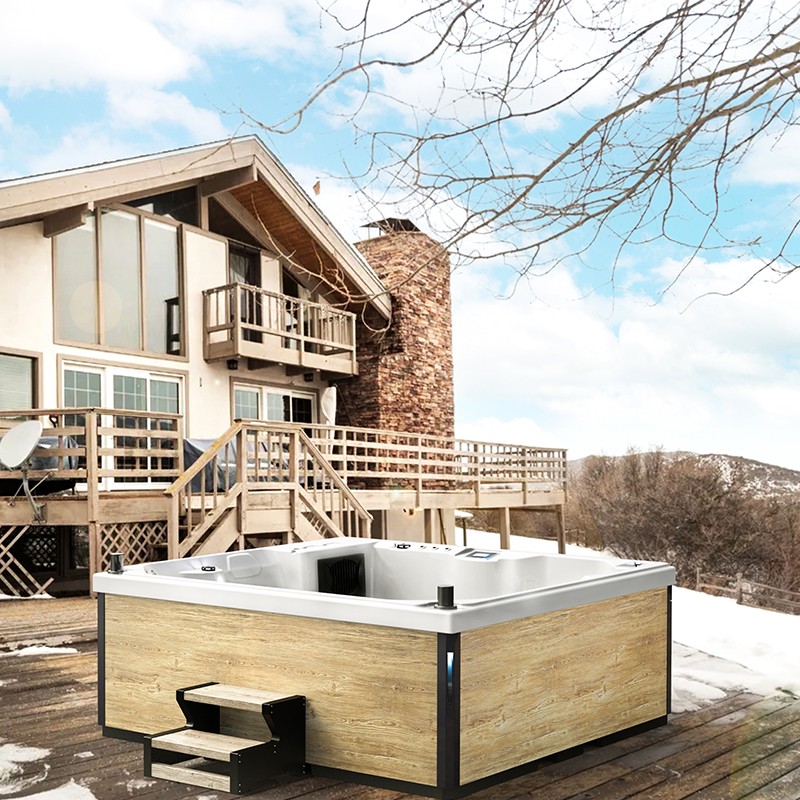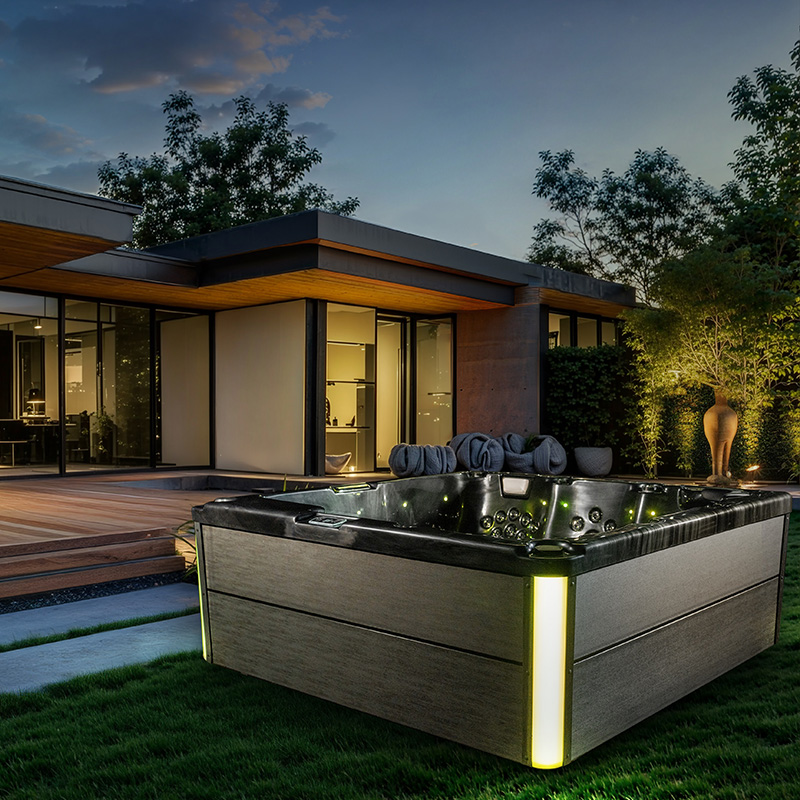
Outdoor Spa Hot Tub Covers: Which Material is Most Durable?
2025-08-25 15:35To protect their outdoor spa hot tubs from environmental factors, many users choose to install a tub cover. A tub cover not only helps maintain water temperature but also prevents external contaminants from entering, extending the life of the tub. However, choosing the right outdoor spa hot tub cover material is crucial, as it directly impacts the cover's durability, functionality, and overall protection of the tub.
So, which material is most durable for an outdoor spa hot tub cover? In this article, we'll delve into the characteristics, advantages and disadvantages, and real-world performance of various materials to help you make an informed choice.

What is the function of an outdoor spa hot tub cover?
Outdoor spa hot tubs are constantly exposed to the elements, facing varying weather conditions, temperature fluctuations, and airborne contaminants. A suitable tub cover not only protects and extends its lifespan, but also improves water temperature retention and reduces energy consumption. Therefore, choosing a durable outdoor spa hot tub cover is a key factor in maintaining water quality and ensuring a pleasant user experience.
1. Protecting Water Quality and Temperature
One of the most important functions of an outdoor spa hot tub cover is maintaining water temperature. Spa hot tubs often need to maintain a certain temperature for extended periods of time, and covers effectively minimize heat loss, saving energy and reducing heating costs. Covers also prevent contaminants such as fallen leaves, dust, debris, and insects from entering the water, ensuring clean water quality.
2. Preventing Heat Loss
In cold weather, the hot water in an outdoor spa hot tub can quickly lose heat due to the low outside temperature. A high-quality spa hot tub cover effectively seals the tub, reducing heat loss and ensuring the ideal water temperature every time you use it.
3. Improving Safety
A spa hot tub cover also prevents children or pets from entering the tub, reducing the possibility of accidents. A safety cover is especially important in homes with children.

What are the common materials for outdoor spa hot tub covers?
Outdoor spa hot tub covers are available in a variety of materials, including plastic, aluminum, PVC, foam, and synthetic rubber. Each material has its own unique advantages and disadvantages, allowing users to choose the right material based on their specific needs and budget. The following details the characteristics and durability of these materials.
1. Plastic
Plastic outdoor spa hot tub covers are very common, especially in more affordable spa hot tubs. Plastic covers are generally lightweight, easy to install and remove, and offer good water resistance.
Advantages:
• Portability: Plastic covers are relatively lightweight, making them easy to remove and place.
• Waterproof: Plastic effectively resists water penetration and offers excellent water resistance.
• Affordability: Plastic covers are generally less expensive than other materials, making them suitable for budget-conscious consumers.
Disadvantages:
• Poor durability: Plastic may be affected by UV rays, wind and rain, and other factors in the outdoor environment, causing it to age, become brittle, or discolor.
• Poor insulation: Plastic offers poor insulation compared to other materials, potentially leading to faster heat loss.
2. Aluminum
Aluminum is popular for outdoor spa hot tub covers due to its strength, light weight, and corrosion resistance. Aluminum alloy covers are suitable for frequent opening and closing, as they are easy to move and durable.
Advantages:
• Corrosion Resistance: Aluminum alloy is highly resistant to corrosion, ensuring a long lifespan even in humid or saline environments.
• Lightweight but Sturdy: Aluminum alloy covers are generally lightweight but offer high structural strength, making them resilient to external impacts.
• Good Thermal Insulation: Compared to plastic, aluminum alloy has a lower thermal conductivity, making it better at retaining water temperature.
Disadvantages:
• Price: Aluminum alloy covers are relatively expensive, making them generally more expensive.
• Susceptibility to Damage: Although aluminum alloy is highly resistant to corrosion, it can still dent or break if subjected to severe impact.
3. PVC
PVC (polyvinyl chloride) covers are a common choice for outdoor spa hot tubs due to their flexibility and durability. PVC covers are often UV-resistant, making them ideal for outdoor use exposed to sunlight for extended periods.
Advantages:
• Weather resistance: PVC is UV-resistant, fade-resistant, and can withstand intense sunlight.
• Waterproof: PVC is highly water-resistant and effectively blocks water penetration.
• Durable: PVC is not easily affected by high or low temperatures, offering a long service life.
Disadvantages:
• Can become hard: In extremely cold environments, PVC can become hard and difficult to handle.
• Average heat retention: PVC's heat retention is not as good as other materials like foam, which can cause water temperature to lose heat more quickly.

4. Foam
Foam, particularly polyurethane foam, is another common choice for outdoor spa hot tub covers. Foam covers are characterized by their excellent heat-insulating properties, effectively preventing heat loss.
Advantages:
• Excellent insulation: The primary advantage of foam is its excellent thermal insulation, which maximizes water temperature.
• Lightweight: Foam is relatively lightweight, making it easy to use and transport. • Good soundproofing: Foam effectively reduces external noise interference and enhances bathtub comfort.
Disadvantages:
• Fragility: Foam has limited durability and can easily break due to impact or exposure to extreme conditions.
• Poor UV resistance: Foam can be damaged by UV rays, causing discoloration or brittleness if not treated properly.
5. Synthetic Rubber
Synthetic rubber outdoor spa hot tub covers are widely used due to their durability and elasticity. Synthetic rubber effectively resists external elements such as wind, rain, and sunlight, offering strong weather resistance.
Advantages:
• Weather resistance: Synthetic rubber offers excellent resistance to UV rays, low temperatures, and wind and rain, making it suitable for extended outdoor use.
• Good elasticity: Synthetic rubber has excellent elasticity and adaptability, allowing it to better conform to the shape of the bathtub.
• Durability: This material is highly durable and resists aging or brittleness even after prolonged use.
Disadvantages:
• Expensive: Synthetic rubber is generally more expensive than other materials.
• Heavier: Synthetic rubber covers can be somewhat heavier than plastic or foam.
Outdoor Spa Hot Tub Cover Material: How Should You Choose?
When choosing the material for your outdoor spa hot tub cover, consider the following factors:
1. Environment
If your outdoor spa hot tub is located in an area exposed to direct sunlight or heavy rain and snow, a material with good UV, water, and weather resistance, such as PVC, synthetic rubber, or aluminum alloy, would be more suitable. If your outdoor spa hot tub is located in a warm, dry area, a plastic or foam cover may be sufficient.
2. Budget Considerations
Prices vary significantly between materials. For those on a budget, plastic or PVC are more cost-effective. For those with more budget, aluminum alloy or synthetic rubber covers offer greater durability.
3. Maintenance Requirements
Some materials, such as foam and plastic, may require more maintenance to ensure long-term use. Synthetic rubber and aluminum alloy, on the other hand, are generally more durable and require relatively little maintenance.
4. Insulation Needs
If you live in a cold area and want to minimize heat loss, a foam or synthetic rubber cover is a better choice; they effectively maintain the temperature of your hot tub water.
What is the lifespan of your spa products?
Our spas are built to last 8–15 years or longer, depending on maintenance and usage. With premium materials like Aristech Acrylic, Balboa electronics, and durable shell construction, our spas deliver long-term performance. As your trusted supplier, we provide full warranty coverage and support services to ensure product longevity.
For commercial use, regular maintenance ensures optimal function and guest satisfaction. Our factory-quality build and competitive prices make us one of the top choices for buyers seeking value and durability.

